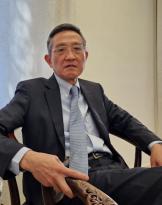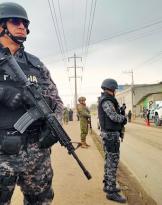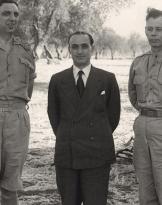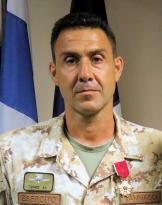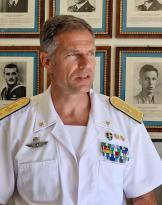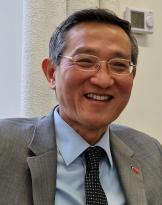My arrival at Amendola airport eloquently sums up the jump made by the Air Force with F35 ...
I'm at the bar to get the pass to access the base when suddenly a roar of reactors echoes in the air. After a few moments, behind the dated faded green buildings in front of the main entrance, they come out cabraying and suddenly veering two pairs of F35s to the left. In rapid sequence!
The thought can not immediately avoid the comparison with the feeling that it felt when arriving at an Air Force base until a few decades ago: it was an armed force with in-line aircraft that in some films were remembered by grandparents and exhibited in museums aviation, like F104.
For heaven's sake, over time successful aircraft, such as the G91, the Tornado, up to the expensive Eurofighter, have alternated. The silhouettes that appear today in the sky are nevertheless futuristic: finally we have the most advanced aircraft (on the market), the only one of 5a generation to fly in hundreds of specimens! Beyond 300 on over 3000 under construction.
The Amendola base, which is about fifteen kilometers from Foggia, is by extension the second in Europe, preceded only by that of Ramstein, in Germany.

Structures with many years behind them alternate with brand new. As the first location designated to host the Lightning II is changing skin and in a few years, where before there were expanses of grass, now hang hangar and impressive buildings designed to house command centers, training, simulators.
The first appointment is with the protagonist of the base: the Joint Strike Fighter. It's the first time we see it so closely.
The commander of the 32 ° Stormo, Colonel Davide Marzinotto, has followed the program for years, in Italy and in the USA since the operational requirements of the machine have been defined. It is (symbolically) one of the officers with whom we have been waiting for years to speak, from which to have answers. Thanks to the new communication directives based on the transparency of the new Minister of Defense - finally - we can have a meeting.
Commander, the 32 ° is the first departmental status to receive F35s. A result to highlight.
They are many events and elements to highlight; among these, the first transatlantic atlantic carried out by a JSF assembled in Italy certainly deserves a mention: one confirmation of the excellent production capacity and quality of the FACO of Cameri. In confirmation of this I can tell her that many procedures of our assembly line have been taken as a model and "transplanted" in the USA, after having verified the quality of Italian manufacturing.

The aircraft is characterized by an operational polyfunctionality.
The history of military aviation has seen a development aimed at creating increasingly specialized aircraft. This happened due to technological limitations: speed with bombing, reconnaissance or other capabilities were not always compatible.
With the arrival of "multi-role" assets, the airplanes have become "reconfigurable" to satisfy different missions. However, all this did not occur at the same time. It happened on the ground and it cost time.
The revolution that represents the F-35 is due to its DNA "omnirole": the aircraft can perform multiple missions simultaneously, without needing to return to the base to be reconfigured.
Perhaps the value in all of this is not immediately comprehensible to all. I can assure you that this is something revolutionary.
Does this entail a high degree of specialization for pilots?
The machine allows you to train in all specialties.

Electronic war included?
Certainly.
How did this result come about?
Thanks to the systems technology. Let's think about the F104. The 80% of the pilot's work was directed to the operation of the aircraft, the residue to the sensors. Over time, the operating behavior of the fighters has evolved. With it the amount of information available, data must be filtered and valued according to the tactical situation.
The uniqueness of the F-35 derives from the immense ability to collect and process information, which, through on-board sensors and / or shared with other assets, allow to widen the horizon and assess threats in an impossible time even just to imagine. A little like facing a simple icon provided by the software of a telephone rather than the complex computer language below. We have more data, greater accuracy and reliability and above all it all happens in real time.
What does the modern F-35 drivers require?
The processing and management capacity of the systems with respect to the aircraft's ability to conduct is certainly more important. We are facing a generational change and new skills are required. After all, one notices this change already in the family when a child picks up a parent's cell phone ...
Computers, as was already the case with Eurofighter, have alleviated the processing capacity of the pilot, allowing better use.
5 technologya generation combines well in an environment of sometimes backward, sometimes outdated assets?
It does so sometimes surprisingly: the sharing of information makes the F-35 a "multiplier". Let me explain: there are weapons systems that until recently were considered dated. Thanks to the system set up allowed by the sharing of the information of the new fighter, many assets have achieved a real second life.
All this computerization will make that cyber one of the main threats ...
Obviously, various levels of security and reliability of the links of the aircraft are set up. An aspect not even minimally neglected.
The development of the F-35 has also met many unexpected events and delays ...
I would like the audience to understand a key aspect. In the past, the development of a weapon system was "sequential": requirements were formulated, it was passed to a project, to tests, to prototypes ...
The concept behind the development of the JSF program was that of "concurrency": it was necessary to realize thousands of aircraft, not hundreds. To do this it was necessary that the development of some components proceeded in parallel. Waiting for the completion of a phase like in the past would have delayed putting the aircraft online and therefore increasing costs.
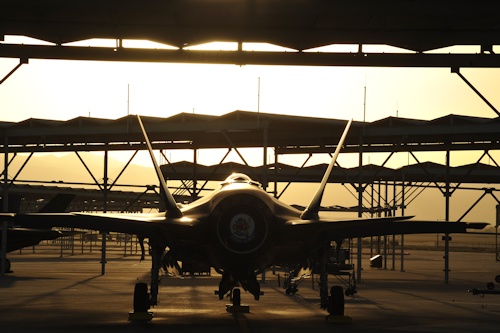
Example of this, the aircraft software?
Exactly: the versions provided the ability to conduct and use the systems that progressively expanded and expanded. IThe software available today is the so-called "3i" (89% of the combat capacity, nda), soon the fleet can be updated to the "3f" standard simply by loading the new SW. L3f upgrade will express the project's operational capabilities, thus concluding the development phase.
The problem of the pilots' helmet (v.articolo) has been exceeded?
It is a limit condition linked to the ejection which, however, does not affect any pilot in service in the Armed Force. None of our pilots is even vaguely close to that borderline case, in terms of height and weight parameters.
In any case, a new helmet is being built, the "GEN3-Light" which will also eliminate this limitation.
To conclude, can you describe the thrill of being at the controls of the most advanced fighter?
I piloted numerous aircraft, from AMX to Eurofighter. What immediately strikes is the simplicity of the conduct of the aircraft.
And then what?
When you are in the air, you are impressed by the perception of the expanded awareness provided by the sensors: a world opens up and you are left speechless.
In an air confrontation at one time there were considerations like "Here me the cable ...", "Here I play it ..." or "Here I have to be careful".
On board an F-35 the thought can not be other than "Poor one who is on the other side !!!"

(Photo: Air Force / Online Defense)



